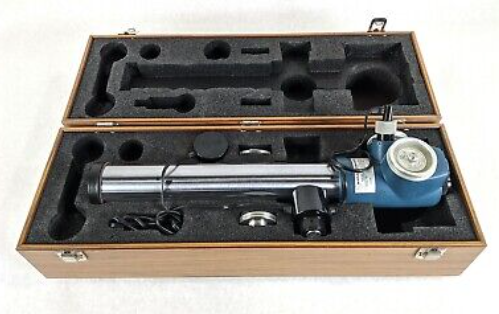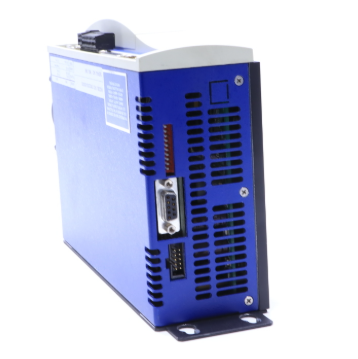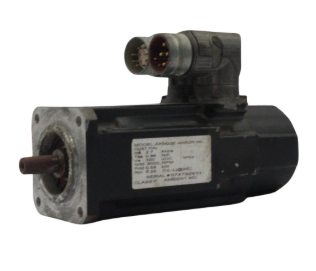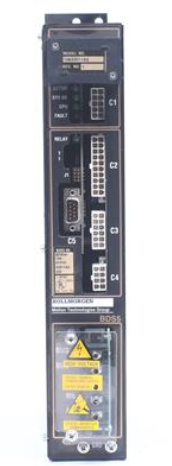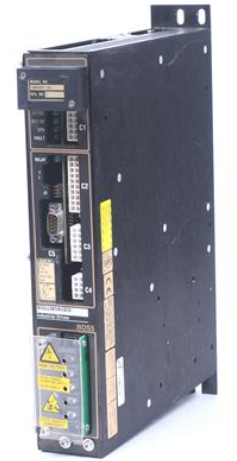How to do chemical process design?
1 Overview
To build a chemical plant, it is necessary to have a group of professional and technical personnel of chemical process, and this group of professional and technical personnel of chemical process must have the following basic conditions.
Master the basic theory of chemical engineering
Such as chemical thermodynamics, fluid mechanics, heat transfer, mass transfer, chemical reaction kinetics (chemical reaction engineering).
Master chemical process design methods and skills
Process design tasks, design scope, process designer responsibilities.
Application of basic theories of chemical engineering (chemical engineering design methods).
Process design basic procedures (process design skills).
The finished product document of the process design (content and depth).
Quality assurance procedures for process design.
Familiar with environmental protection, safety, fire and other laws and regulations
HG20667-1986 Environmental protection design regulations for chemical construction projects
SH3024-95 Code for design of environmental protection for petrochemical enterprises
HG20571-95 Safety and health design regulations for chemical enterprises
SH3047-93 Code for Design of occupational Safety and Health in petrochemical enterprises
GBJ16-87(2001 edition) Code for Fire Protection Design of buildings
GB50160-92(1999 edition) Design code for fire prevention in petrochemical enterprises
GB50058-92 Specification for design of electrical installations in explosive and hazardous environments

2 Phase of chemical construction project
The division of construction project stages is mainly based on engineering companies, which are usually divided into three stages:
Early stage of project
Project Proposal → After approval, the project is approved
Feasibility Study Report → Engineering design can commence upon approval
Engineering design
According to domestic approval requirements, it is divided into: preliminary design → construction units can start after approval; Construction drawing design
According to the international conventional practice is divided into: process design, basic design, detailed design.
Construction, installation, test run, performance assessment and national acceptance
The construction project phase is divided into four stages with the construction unit as the main body: the early stage of the project, engineering design, engineering construction, and factory put into production.
3 Content of process design
The document of process design includes three major contents: text description (process description), drawings and tables.
3.1 Text Description (Process description)
Scope of process design.
Design basis: production scale, product scheme, raw materials, catalysts, chemicals, utility fuel specifications, product and by-product specifications.
Process description: production method, chemical principle, process description.
Consumption quota and consumption of raw materials, catalysts, chemicals and fuels.
Utility (including water, electricity, steam, desalted water, refrigeration, process air, instrument air, nitrogen) consumption quota and consumption.
Three wastes discharge: including discharge point, discharge amount, discharge composition and proposed treatment method
Installation staffing
Safety Memorandum (separate book)
Technical risk Memorandum (usually for internal use, separate book)
Operation guide (usually for internal use, separate book. For professional use of process system, piping, etc.)

3.2 Drawings
PFD: is the design basis of PID, used for basic design (usually in version by version deepening).
Includes all process equipment, main material piping (indicating flow direction, material number), main control loop, interlocking scheme, heating and cooling media, and process air entry and exit locations.
Recommended equipment layout: It is the basis for general layout and device layout, and is used for basic design (usually a floor layout). The layout is carried out according to the characteristics and requirements of the process flow.
PCD: Usually an internal design process document of the design institute, which is ultimately reflected in the final PFD (usually completed by the automation professional).
3.3 Table
Material balance table: includes physical and chemical constants such as logistics composition, temperature, pressure, state, flow, density, enthalpy value, viscosity, etc. (heat load is indicated in this table or on the PFD diagram).
Process equipment data table: according to the different forms of equipment, different functions and different media can be divided into containers, towers, heat exchangers, industrial furnaces, pumps, agitators, etc. The process equipment data table should indicate the equipment position number, medium name, operating pressure, design pressure, operating temperature, design temperature, material, transmission mechanism, overall dimensions, characteristic dimensions and special requirements. (Each design institute has a variety of prescribed forms).
Table of process equipment.
Summary of sampling points.
Plant boundary Conditions Table: Usually developed and published by the process system professional (including raw materials, utilities, products, by-products, entry and exit boundary conditions, etc.).
3.4 Supplementary Notes
Chemical technology majors still need to participate in the preliminary work, the main preliminary work is:
Project proposal; Preparation of feasibility report.
Project quotation; Preparation of tender and technical documents.
Introduction project: including inquiry, tender evaluation, contract technical annex negotiation.
Overall planning and design of large and medium-sized combined installations.

4 Process design method
4.1 Selection of process route
Factors to be considered: raw material source, economic and social benefits (production costs), environmental protection, other operating conditions, safety, fire protection, investment, technological advancement, feasibility and rationality opinions.
4.2 Optimization of process plan
▲ Optimization of reaction process
There are many and complicated problems to be considered in the optimization of reaction process. Such as reaction kinetics, reaction yield, catalyst characteristics, reaction course, reaction path.
The optimal operating conditions of the reactor include how to ensure the reaction temperature, reaction pressure, mixing requirements, heat transfer requirements, the ratio of each material, and the production cost under given conditions.
▲ Optimization of rectification process
If the distillation process needs to separate R components, R-1 rectification column is required.
Rectification optimization needs to consider: which component is the main product, which component is the product and the product specification requirements.
Distillation process optimization method 1) : trial method, the main rules are as follows:
Normal rectification is preferred.
Try to avoid decompression operations and use of cooling capacity.
The number of products should be minimal.
Corrosive and dangerous components should be separated first.
The components that are difficult to separate are finally separated.
The largest number of components shall be separated first.
The top of the tower and the products of the tower reactor are best separated by equal moles.
Optimization method of rectification process 2) : optimization method

Distillation process optimization method 3) : mathematical programming method
▲ Optimization of evaporation process
Single effect, double effect, triple effect evaporation.
Heat pump evaporation, membrane evaporation.
Multi-stage flash evaporation.
Forced circulation evaporation, natural circulation evaporation,.
The selection is based on the type of evaporator (standard, suspension frame, Levin, forced circulation evaporator).
4.3 Selection of process equipment
▲ Reactor
The choice of reactor should be based on material properties, stability, reaction complexity, product scale, reaction time, temperature, pressure and other factors
▲ gas-liquid mass transfer equipment
1) Plate tower: bubble cap, float valve, screen plate, etc. The flow direction distribution type of plate tray can be divided into U-shaped flow, single overflow, double overflow and so on
2) Packing tower:
Lacey ring, ball ring, moment saddle ring and other packing.
Loose, structured packing.
Solid packing, screen packing.
The selection of the above mass transfer equipment should be based on the separation difficulty, pressure drop size, vacuum (heat sensitive materials), material nature, investment situation, corrosion situation, material cleaning situation, safety requirements, elasticity size, foaming and other conditions.

▲ Heat transfer equipment
Divided by function: cooler, condenser, heater, heat exchanger, reboiler, steam generator, superheater, waste heat boiler, etc.
According to the structure type: The heat exchanger using two flow heat exchange is divided into the following five types from the structure
A. Shell type (fixed tube plate, floating head type, stuffing box type, U-shaped tube type)
B. Plate type (plate fin type, spiral plate, umbrella plate, corrugated plate)
C. Tube type (air cooler, tube type, spray pipe type, box type)
D. Liquid film type (lifting film type, scraper film type, centrifugal film type)
E. Other types (shell type, heat pipe type)
The selection of the above type of heat exchanger is based on:
A. Fixed tube-plate heat exchanger: fixed tube-plate heat exchanger that is, both ends of the tube plate and the shell are connected into one, because the shell process is not easy to repair and clean, so when choosing A fixed tube-plate heat exchanger, the shell fluid should be cleaner and not easy to scale the material; When the temperature difference between the two fluids is large (greater than 60℃), thermal compensation should be considered, and the temperature difference between the two fluids is not easy to be greater than 120℃.
B. Floating head heat exchanger: the heat exchanger shell is easy to clean, but the inner gasket is easy to leak, suitable for heat exchangers that need to compensate for thermal expansion, and the temperature difference between the two fluids is greater than 120℃.
C.u-type tube heat exchanger: "The heat exchanger is convenient to manufacture, install, low cost, pipe resistance to high pressure, but the structure is not compact." It is suitable for high temperature and high pressure situations, and the fluid in the tube must be clean.

D. Plate heat exchanger
Plate fin type: compact, high efficiency, can be multiple strands of material heat transfer at the same time. The operating temperature is not more than 150℃.
Spiral plate: can be used with granular materials, good level utilization. Not easy to repair.
Umbrella plate: simple, compact, easy to clean, the use of temperature is not more than 150℃, the use of pressure is not more than 0.12MPa.
Corrugated plate: compact, high efficiency, easy to clean, the use temperature is not more than 150℃, the use pressure is not more than 0.15MPa.
E. Selection basis of air cooler
a. The air inlet temperature (i.e. the design temperature) is lower than 38℃.
b. The outlet temperature of the hot fluid is higher than 50 ~ 65 ° C, and a certain fluctuation range (3 ~ 5 ° C) is allowed.
c. The logarithmic mean temperature difference is greater than 40℃.
d. The fluid approach temperature (that is, the difference between the exit temperature of the hot fluid and the entrance temperature of the cold fluid) is at least 15 ° C.
e. The heat transfer coefficient in the pipe is less than 2325.6W/(m2.K).
f. The fouling coefficient of cooling water is greater than 0.0002(m2.K)/W.
g. The water source is far away, and the cost of water collection is large.
h. The freezing point of hot fluids is low (less than 0℃).
▲ Chemical pump
According to the nature of the material, the corrosiveness of the material, flammable and explosive, toxic, high temperature, high pressure, low temperature, viscosity, volatility, solid particles and other factors, in addition to considering the safety, reliability and sealing requirements of the pump.

▲ Container (storage tank)
According to the nature of the material, corrosiveness of the material, inflammable and explosive, toxic, high temperature, high pressure, low temperature, viscosity, volatility, solid particles and other factors.
Storage tanks can be roughly divided into two categories according to use, one is for storage, generally refers to the storage of raw materials, intermediate products or finished products, raw materials and finished products storage generally has a great relationship with the external transport of the factory, intermediate product storage and the production of the intermediate product before and after the device has a great relationship. For example, it is necessary to consider the production cycle of the front and rear devices, the normal start and stop and the accident stop situation to determine the amount of storage. This type of tank farm is generally set up separately. The other is the storage tank required for the process process in the device, which usually has a return tank (residence time takes 5 to 10 minutes), a receiving tank and a buffer tank (usually takes 20 minutes), a gas-liquid separation tank (usually takes 2 to 3 minutes), a liquid-liquid separation tank, etc.
- EMERSON
- Honeywell
- CTI
- Rolls-Royce
- General Electric
- Woodward
- Yaskawa
- xYCOM
- Motorola
- Siemens
- Rockwell
- ABB
- B&R
- HIMA
- Construction site
- electricity
- Automobile market
- PLC
- DCS
- Motor drivers
- VSD
- Implications
- cement
- CO2
- CEM
- methane
- Artificial intelligence
- Titanic
- Solar energy
- Hydrogen fuel cell
- Hydrogen and fuel cells
- Hydrogen and oxygen fuel cells
- tyre
- Chemical fiber
- dynamo
- corpuscle
- Pulp and paper
- printing
- fossil
- FANUC
- Food and beverage
- Life science
- Sewage treatment
- Personal care
- electricity
- boats
- infrastructure
- Automobile industry
- metallurgy
- Nuclear power generation
- Geothermal power generation
- Water and wastewater
- Infrastructure construction
- Mine hazard
- steel
- papermaking
- Natural gas industry
- Infrastructure construction
- Power and energy
- Rubber and plastic
- Renewable energy
- pharmacy
- mining
- Plastic industry
- Schneider
- Kongsberg
- NI
- Wind energy
- International petroleum
- International new energy network
- gas
- WATLOW
- ProSoft
- SEW
- wind
- ADVANCED
- Reliance
- YOKOGAWA
- TRICONEX
- FOXBORO
- METSO
- MAN
- Advantest
- ADVANCED
- ALSTOM
- Control Wave
- AB
- AMAT
- STUDER
- KONGSBERG
- MOTOROLA
- DANAHER MOTION
- Bently
- Galil
- EATON
- MOLEX
- Triconex
- DEIF
- B&W
- ZYGO
- Aerotech
- DANFOSS
- KOLLMORGEN
- Beijer
- Endress+Hauser
- MOOG
- KB
- Moxa
- Rexroth


Email:wang@kongjiangauto.com








































































































